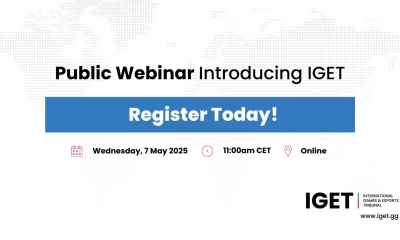Doping & Cheating
The Imperative of Anti-Doping Programs in eSports
As eSports rapidly evolves into a recognized sporting discipline, its inclusion as a medal sport at the Hangzhou Asian Games and the successful conclusion of the first Olympic eSports Week in Singapore underscore its global influence. This evolution brings to the forefront the necessity of stringent anti-doping measures to protect the integrity of the sport and the health of its athletes.

eSports’ Trajectory and Doping Risks
The phenomenal growth of eSports, transitioning from a fringe hobby to a major sporting event, has not gone unnoticed by the World Anti-Doping Agency (WADA). WADA’s Vice President Yang Yang has emphasized the parallels between eSports athletes and their counterparts in traditional sports, highlighting their rigorous training schedules and the competitive nature of their events. However, the digital arena of eSports presents unique challenges in the context of doping, a concern traditionally associated with physical sports.
Documenting Doping in eSports
Contrary to the perception that eSports require less physical exertion, athletes in this domain undergo intense training regimes, often exceeding 16 hours a day. This high-demand environment can lead to the misuse of performance-enhancing drugs, a concern substantiated by instances of drug abuse among gamers. WADA’s 2024 Prohibited List, a comprehensive document outlining banned substances and methods in sports, becomes a crucial tool in identifying and regulating such abuses in eSports.
The 2024 Prohibited List from WADA includes several important updates that might be relevant to eSports doping concerns. Key modifications include:
- Renumbering of Subclasses: To enhance clarity, subclasses of sections like S1, S2, S4, M1, M2, M3, and S6 were renumbered.
- Addition of New Substances: Notable additions include 2,4-Dinitrophenol (DNP), troponin activators like Reldesemtiv and Tirasemtiv, Trestolone, and dimethandrolone.
- Clarification on Peptide Hormones and Growth Factors: The list clarifies and updates sections regarding testosterone-stimulating peptides, adding substances like Kisspeptin and its agonist analogues.
- Hormone and Metabolic Modulators Updates: Updates to this section include the addition of Rev-Erb-α agonists.
- Changes in Stimulants and Narcotics Classifications: New additions in stimulants and changes in narcotics, such as the prohibition of Tramadol in competition due to its performance-enhancing potential, are noted.
- Monitoring Program Adjustments: Changes include the removal of certain substances like Salmeterol from the monitoring program and the addition of others for monitoring purposes.
WADA’s Response and Education Initiatives
In response to these emerging challenges, WADA has initiated dialogues with the International eSports Federation (IeSF) to integrate anti-doping education and testing into the fabric of eSports. The aim is to create an equitable environment where eSports athletes are subject to the same rigorous testing and educational programs as traditional athletes. This initiative is crucial in preserving the essence of fair competition and safeguarding the health of the athletes.
Incorporating eSports into Traditional Sporting Events
The inclusion of eSports in mainstream sporting events, such as the Asian Games, marks a significant milestone in its recognition as a legitimate sport. However, this integration also highlights the disparity in doping regulations between eSports and traditional sports. WADA’s efforts to bridge this gap through structured anti-doping regulations and the implementation of the 2024 Prohibited List in eSports are steps towards ensuring a level playing field.
The Importance of Fair Play and Athlete Health
The core of WADA’s mission in integrating anti-doping measures into eSports lies in the principles of fair play and athlete health. As eSports continues to gain popularity and attract a wider audience, the responsibility to maintain the sport’s integrity grows. Implementing structured anti-doping measures will not only ensure fair competition but also safeguard the athletes from the potential health risks associated with doping.
Future Directions for eSports
As eSports cements its place in the global sporting arena, the need for comprehensive anti-doping regulations becomes increasingly evident. The collaboration between WADA, IeSF, and other relevant bodies such as ESIC is instrumental in shaping a future where eSports is not only recognized for its competitive spirit but also for its commitment to clean and fair play. The upcoming code review process by WADA presents an opportunity to further refine and tailor anti-doping regulations to the unique needs of eSports, ensuring its sustainable growth and the well-being of its athletes.
Conclusion
The ascent of eSports to a global platform brings with it unique challenges, particularly in the realm of doping. Addressing these challenges through targeted education, regulation, and the implementation of anti-doping programs is paramount for the future of eSports. With collaborative efforts from organizations like WADA and IeSF, eSports is poised to continue its growth trajectory, upholding the principles of fair competition and prioritizing the health and well-being of its athletes.
Image source: Gazetta Esports


















